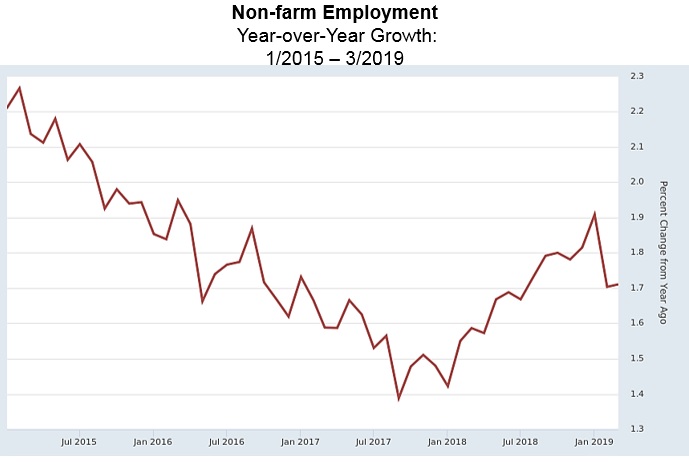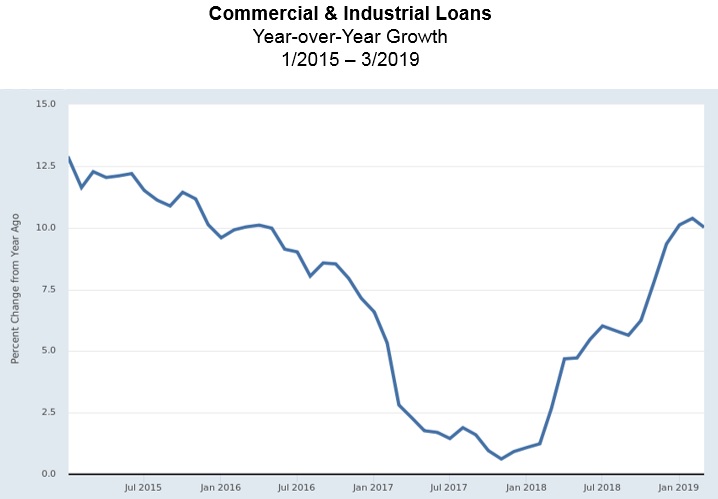News of high April employment growth along with strong first-quarter numbers on labor productivity felt better than a grand slam in the bottom of the ninth inning in a tied game. Yes, the home team cheered wildly for this evidence of a strong economic pulse. There were far more smiles than frowns. But let’s continue looking more closely and see what data tell us.
As shown in the nearby chart, employment growth has been accelerating since early 2018. But the chart also tells us that things went south in December 2018 following several government actions, and now, even with the good numbers in April, the growth rate is getting weaker.

The data seem to endorse something most business people already knew. First off, the economy was hit hard in December 2018 when it was struck by a Fed interest rate hike, a government shutdown, and loud threats about placing more tariffs on European and Chinese goods. At the time, it seemed our government servants were dead set on snatching the economy from the jaws of victory. And snatch they did!
We can get another take on the situation from a second set of data: the bank-lending counterpart to the employment story. I show this in the next chart, which reports growth in lending for the entire U.S. banking system. Yes, the image looks a lot like the employment chart. Employment and lending growth move together. Again, we see a slowing 2017 lending pace that bottoms out and heads north in early 2018, just like employment growth. Again, the numbers for the last few months show growth weakening some. The growth rate is positive, but it is not rising.

We have a high performing but hesitating economy. Why the hesitation?
Some investors may be awaiting congressional approval of NAFTA’s replacement, the U.S.-Mexico-Canada Agreement, and hoping that the heydays of Mexican production of U.S.-bound autos will continue. Others may be on the sideline waiting to see if President Trump’s trade negotiators will reach a happy trade agreement with China, ideally one that eliminates the recent barriers that have been put in place while also greasing the rails for improved future trade. Trump’s recent threats to expand tariffs on Chinese goods raises further uncertainty and amplifies the hesitation in the economy.
Still others may be hesitating because of uncertainty regarding the future of Obamacare, which tens of millions of business employees rely on. Some may be wondering what will happen to the price of oil at a time when trade sanctions are alternately imposed and relaxed amid growing Middle East tensions.
Finally, some investors may even have their attention focused on caustic congressional hearings, impeachment talk, and other disturbing elements of the Washington merry-go-round, all the while wondering where this crazy political season will take us.
Meanwhile, back in small-town U.S.A., it’s early May. Sandlot baseball is in full swing, high school proms are the talk of the town, and lots of young people are looking forward to graduating and moving on to a job or the start of another educational journey. Job choices are better in many places, and community colleges are making education more affordable.
No doubt about it, a happy economy makes for happy people, even when it is hesitating.
Bruce Yandle is a contributor to the Washington Examiner’s Beltway Confidential blog. He is a distinguished adjunct fellow with the Mercatus Center at George Mason University and dean emeritus of the Clemson University College of Business and Behavioral Science. He developed the “Bootleggers and Baptists” political model.

